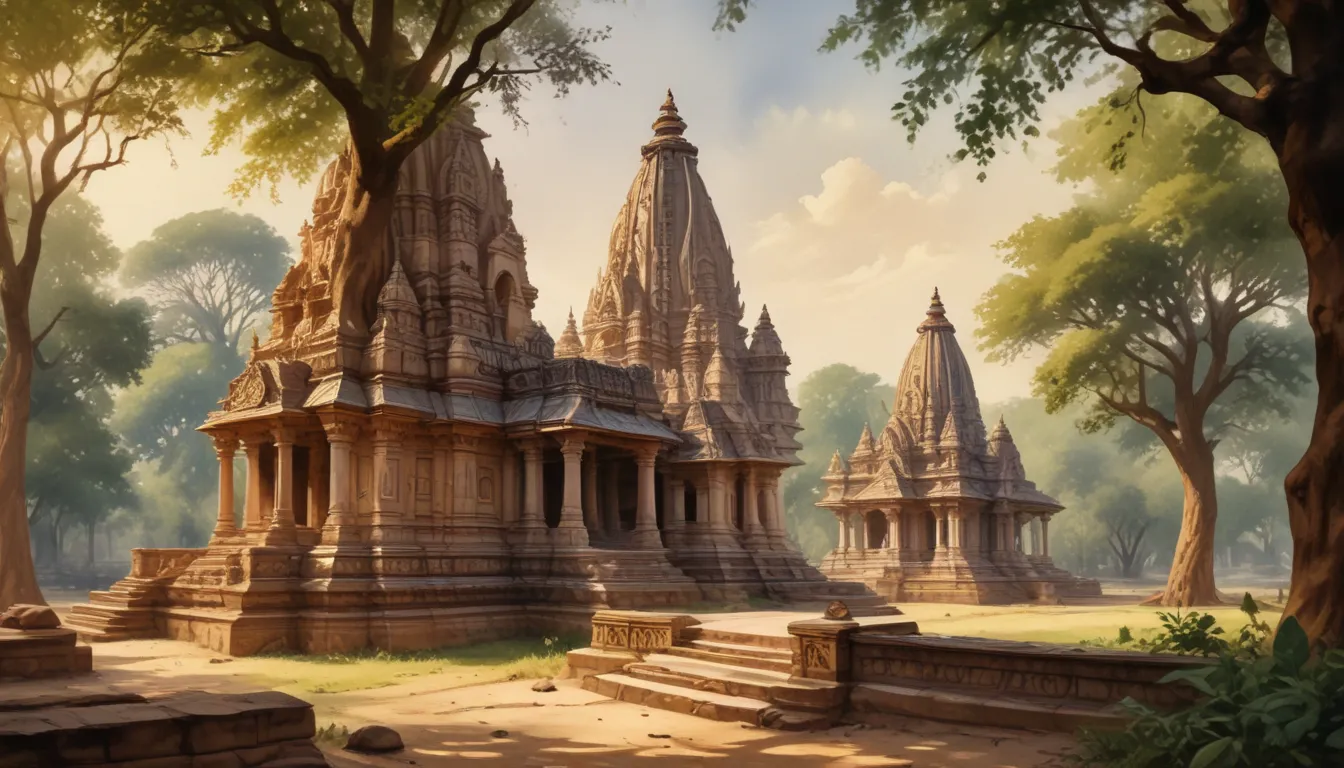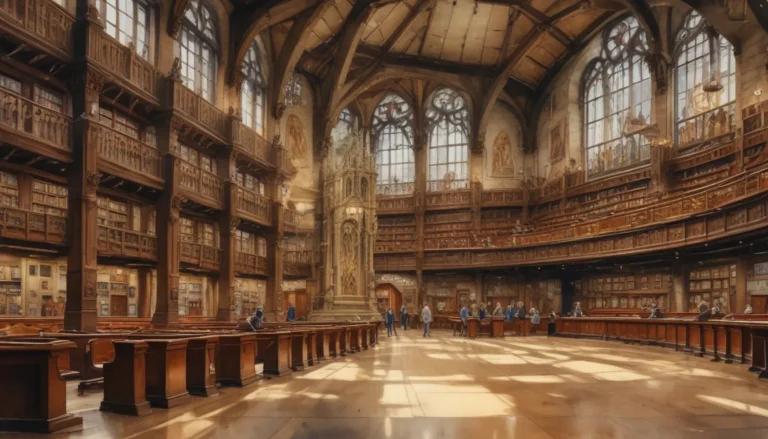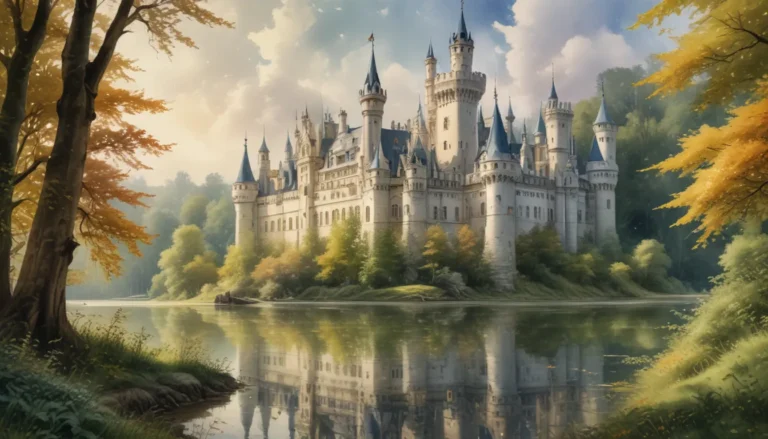The images in our articles are for illustrative purposes only and may not exactly match the content. They are intended to capture your interest and complement the text, not to replace it.
Welcome to a fascinating journey through the captivating Khajuraho Temples, a marvel of architectural brilliance nestled in the Indian state of Madhya Pradesh. These ancient Hindu and Jain temples, built by the Chandela dynasty between the 9th and 11th centuries, continue to mesmerize visitors with their intricate sculptures and rich historical significance. Let’s uncover 10 intriguing facts about the Khajuraho Temples that will deepen your understanding and appreciation for these awe-inspiring structures.
Discovering the UNESCO World Heritage Site
The Khajuraho Temples stand as a testimony to India’s rich cultural heritage and have been rightfully recognized as a UNESCO World Heritage Site. These iconic temples are famed for their detailed carvings, architectural splendor, and profound historical importance.
Unveiling a Century of Craftsmanship
Erected during the Chandela dynasty’s reign between 950 and 1050 AD, the Khajuraho Temples showcase the exceptional skills and craftsmanship of artisans from that era. Over a span of 100 years, these temples were meticulously constructed, embodying a blend of artistic excellence and spiritual significance.
Discovering the Lost Temples
Though only a handful remain today, the Khajuraho Temples were originally comprised of 85 temples dedicated to various Hindu deities like Shiva, Vishnu, and Devi. The surviving temples offer a glimpse into the architectural grandeur and spiritual essence of this ancient site.
Marveling at Intricate Sculptures
A hallmark of the Khajuraho Temples is their intricate sculptures and carvings that portray a wide array of subjects, from celestial beings to everyday human life. The meticulous attention to detail and artistic finesse displayed in these sculptures is truly remarkable and continues to captivate visitors.
Exploring Controversial Eroticism
Among the temple’s renowned features are the explicit erotic sculptures that have intrigued visitors for centuries. These depictions of sexual acts symbolize fertility, love, and the celebration of life, showcasing a unique aspect of ancient Indian artistry and cultural expression.
Unearthing 19th-Century Rediscovery
After centuries of being concealed by forests, the Khajuraho Temples were rediscovered in the 19th century by British officer T.S. Burt. Since their rediscovery, these temples have garnered global attention, becoming a popular tourist destination cherished for their historical and artistic significance.
Witnessing Architectural Diversity
The Khajuraho Temples display a harmonious blend of Hindu, Jain, and Nagara architectural styles, characterized by intricate layouts, towering spires, and ornate decorations. This architectural diversity serves as a poignant reminder of India’s rich cultural tapestry and artistic heritage.
Admiring the Majestic Kandariya Mahadeva Temple
Standing as the largest and most ornate temple in Khajuraho, the Kandariya Mahadeva Temple pays homage to Lord Shiva. Adorned with a towering spire and intricate carvings, this temple is a testament to India’s architectural magnificence and spiritual devotion.
Recalling a Vibrant Past
In its prime, the Khajuraho Temples were surrounded by a thriving city bustling with markets, residences, and other structures. While the city has faded into ruins, the temples stand as a poignant reminder of the grandeur and prosperity that once graced this ancient site.
Embracing Global Visitors
Drawing visitors from around the world, the Khajuraho Temples continue to enchant travelers with their architectural splendor, historical intrigue, and awe-inspiring carvings. These temples not only celebrate India’s cultural legacy but also highlight the artistic accomplishments of bygone civilizations.
Embark on a journey through time and immerse yourself in the enchanting world of the Khajuraho Temples, where spirituality and artistry converge to create a transcendent experience. Whether you’re a history buff, an art enthusiast, or a spiritual seeker, a visit to these ancient wonders promises to transport you to a realm of timeless beauty and profound cultural significance.
Unveiling Deeper Mysteries
The Khajuraho Temples beckon with their allure, inviting you to delve deeper into their mysteries and unravel the secrets of this UNESCO World Heritage Site. Our exploration of the Khajuraho Group of Monuments delves further into the rich history and architectural marvels that define these timeless wonders. Prepare to be astonished by the hidden stories and intricate details that await within the hallowed walls of these magnificent temples.
Frequently Asked Questions
- How many temples are there in Khajuraho?
-
There are a total of 25 surviving temples in Khajuraho, with the Western Group being the most renowned.
-
What is the significance of the erotic sculptures in the Khajuraho Temples?
-
The erotic sculptures symbolize the celebration of life, fertility, and divine union, reflecting tantric traditions and the importance of sensuality in spiritual enlightenment.
-
Are the Khajuraho Temples still used for worship?
-
While no longer actively used for worship, the Khajuraho Temples are considered sacred and attract devotees and tourists alike for their historical and architectural significance.
-
How long does it take to explore the Khajuraho Temples?
-
On average, it takes about 3 to 4 hours to visit the main temples in the Western Group, depending on your level of curiosity and interest.
-
Is photography allowed inside the Khajuraho Temples?
- Photography is permitted in the temple premises, with certain exceptions for interiors of specific temples. Always check with authorities before taking pictures.
As you embark on a journey through the captivating world of the Khajuraho Temples, let the awe-inspiring architecture and rich history transport you to a realm of timeless beauty and cultural significance. Prepare to be amazed by the intricate carvings, architectural splendor, and spiritual symbolism that await within these ancient stone structures, where artistry and spirituality intertwine to create an unforgettable experience.
The Khajuraho Temples stand as a testament to the ingenuity and artistic prowess of the Chandela dynasty, embodying a legacy of architectural excellence and spiritual devotion that continues to inspire and captivate visitors from around the globe. Immerse yourself in the grandeur of India’s rich cultural heritage and embark on a journey of discovery through the enchanting world of the Khajuraho Temples.






